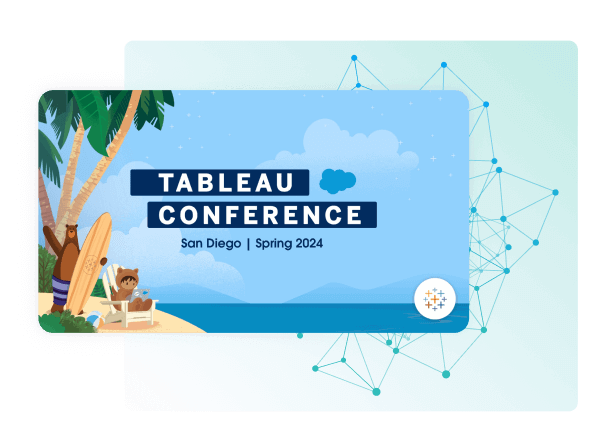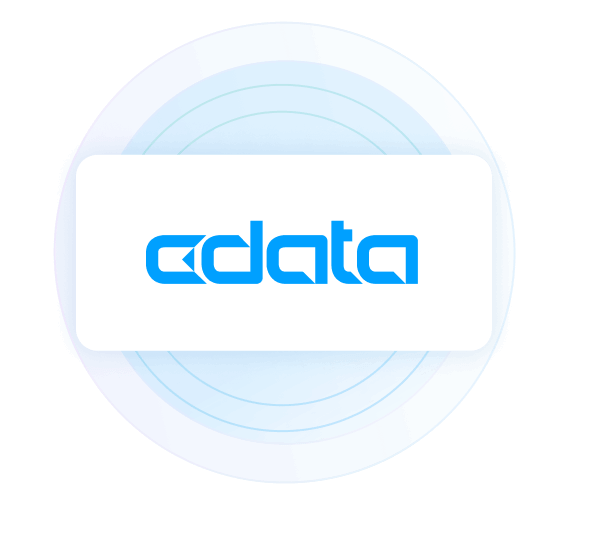Discover how a bimodal integration strategy can address the major data management challenges facing your organization today.
Get the Report →Work with Dynamics CRM Data in FoxPro
Load Dynamics CRM data into a FoxPro database. This article includes full code and a walk-through of the process.
The CData ODBC Driver for Dynamics CRM enables you to access Dynamics CRM data using the ODBC standard. You can use the CData ODBC Driver for Dynamics CRM to integrate Dynamics CRM data into your FoxPro project. The procedure below provides a walk-through of the included code sample, which saves Dynamics CRM data into tables in a FoxPro database.
Connect to Dynamics CRM as an ODBC Data Source
If you have not already, first specify connection properties in an ODBC DSN (data source name). This is the last step of the driver installation. You can use the Microsoft ODBC Data Source Administrator to create and configure ODBC DSNs.
NOTE: Set the 'Map To WVarchar' connection property to FALSE (FoxPro uses the ODBC W API and returns the WCHAR for the value type).
The connection string options meet the authentication and connection requirements of different Dynamics CRM instances. To connect to your instance, set the User and Password properties, under the Authentication section, to valid Dynamics CRM user credentials and set the Url to a valid Dynamics CRM server organization root. Additionally, set the CRMVersion property to 'CRM2011+' or 'CRMOnline'. IFD configurations are supported as well; set InternetFacingDeployment to true.
Additionally, you can provide the security token service (STS) or AD FS endpoint in the STSURL property. This value can be retrieved with the GetSTSUrl stored procedure. Office 365 users can connect to the default STS URL by simply setting CRMVersion.
Connect and Transfer
To get started, add the code sample to a new project. You can execute the following command to save all tables without displaying them:
DO C:\Temp\sqldump.prg WITH "CData DynamicsCRM Source", "TESTDB", .f.
Below is the process that the program follows:
- Create a new FoxPro database.
Open a connection to Dynamics CRM data with the line below:
m.hSQLconnection = SQLCONNECT(m.cODBCDSN)If the connection was successful, you can now retrieve the list of tables using the SQLTABLES function. The code below saves the list of tables in sys_tables.dbf:
WAIT WINDOW "Fetching tables for data source '" + m.cODBCDSN + "'..." NOWAIT NOCLEAR m.nSQLTABLES = SQLTABLES(m.hSQLconnection) IF lUseDistinctConnections WAIT WINDOW "Closing ODBC Connection for data source '" + m.cODBCDSN + "'..." NOWAIT NOCLEAR SQLDISCONNECT(m.hSQLconnection) m.hSQLconnection = 0 * SQLCONNECT needs to be called again ENDIF IF m.nSQLTABLES > 0 * create local table containing list of tables in db COPY TO (m.cImportData + "sys_tables") USE * convert each table to DBF USE (m.cImportData + "sys_tables") ALTER TABLE DBF("sys_tables") ; ADD COLUMN records i ; ADD COLUMN dbfname m-
Scan over each table, saving it to a DBF file. The function ODBCtoDBF stores the table in a DBF file and then opens a grid if the lBrowse parameter is set to true:
FUNCTION ODBCtoDBF (cTableName as String, cTableType as String, lBrowse as Logical, lhSQLConnection as Integer) WAIT WINDOW ; "Converting " + m.cTableType + ' "' + m.cTableName + '" to DBF...' ; NOWAIT NOCLEAR ACTIVATE SCREEN * strip characters incompatible with FoxPro out of the name of the DBF file m.cTableAlias = "" m.nTableNameLen = LEN(m.cTableName) m.nTableNameStart = 1 FOR m.nTableNameStart = 1 TO m.nTableNameLen m.cCharacter = SUBSTR(m.cTableName, m.nTableNameStart, 1) IF !ISALPHA(m.cCharacter) .and. (m.nTableNameStart = 1 .or. !ISDIGIT(m.cCharacter)) m.cTableAlias = m.cTableAlias + "_" ELSE m.cTableAlias = m.cTableAlias + m.cCharacter ENDIF ENDFOR m.cFromTable = m.cTableName m.cTempViewAlias = m.cTableType + "_" + m.cTableAlias LOCAL loException as Exception LOCAL lnResultSets TRY * run query m.lnResultSets = SQLEXEC(m.lhSQLConnection, ; "SELECT * FROM " + m.cFromTable, ; m.cTempViewAlias, ; aSQLResult) IF m.lnResultSets#1 SET STEP ON ENDIF ACTIVATE SCREEN CATCH TO m.loException ACTIVATE SCREEN ? "Error opening " + m.cTempViewAlias + ":" ? m.loException.Message ? m.loException.Details ENDTRY IF !USED(m.cTempViewAlias) RETURN ENDIF * copy records from view cursor to disk SELECT * FROM (m.cTempViewAlias) ; INTO TABLE (m.cImportData + m.cTableAlias) IF USED(m.cTableAlias) ACTIVATE SCREEN FLUSH && flush the buffer to write the data to disk IF m.lBrowse * pop the table up on screen SELECT (m.cTableAlias) BROWSE NORMAL NOMODIFY NOWAIT ACTIVATE SCREEN ELSE * close on-disk table for now USE IN (m.cTableAlias) ACTIVATE SCREEN ENDIF ENDIF IF USED(m.cTempViewAlias) USE IN &cTempViewAlias && close SQL view ACTIVATE SCREEN ENDIF WAIT CLEAR ENDFUNC - You can now save tables of Dynamics CRM data as DBF files.
Below is the full code, in FoxPro 9 syntax:
PARAMETERS cODBCDSN, cDatabaseName, lBrowseAfterConvert
* cODBCDSN The ODBC data source name, used for the name of the folder where the DBF tables are stored.
* cDatabaseName The name of the FoxPro database to use. This database is created if it does not exist. The default is DATABASE_NAME.
*
* lBrowseAfterConvert If ".t." display each table with the BROWSE command after importing it. If ".f." close each table before moving on to the next one.
#define ODBC_DATASOURCE "DataSourceName"
#define DATABASE_NAME "odbcdata"
m.m_tpath = ".\" && root directory for data
ON ERROR
SET SAFETY OFF
IF VARTYPE(m.cODBCDSN)#"C" .or. EMPTY(m.cODBCDSN)
m.cODBCDSN = ODBC_DATASOURCE
ENDIF
IF VARTYPE(m.cDatabaseName)#"C" .or. EMPTY(m.cDatabaseName)
m.cDatabaseName = DATABASE_NAME
ENDIF
m.cImportData = m.cODBCDSN + "\"
CLOSE TABLES ALL
CLOSE DATABASES ALL
IF !DIRECTORY(m.cImportData)
MKDIR (m.cImportData)
ENDIF
CREATE DATABASE (m.cDatabaseName)
CREATE CONNECTION (m.cDatabaseName) DATASOURCE (m.cODBCDSN) DATABASE (m.cDatabaseName)
WAIT WINDOW "Opening ODBC Connection for data source '" + m.cODBCDSN + "'..." NOWAIT NOCLEAR
m.hSQLconnection = SQLCONNECT(m.cODBCDSN)
IF m.hSQLconnection > 0
* Connection successful; get list of tables
WAIT WINDOW "Fetching tables for data source '" + m.cODBCDSN + "'..." NOWAIT NOCLEAR
m.nSQLTABLES = SQLTABLES(m.hSQLconnection)
IF m.nSQLTABLES > 0
* Create local table containing list of tables in db
COPY TO (m.cImportData + "sys_tables")
USE
* Convert each table to DBF
USE (m.cImportData + "sys_tables")
ALTER TABLE DBF("sys_tables") ;
ADD COLUMN records i ;
ADD COLUMN dbfname m
SCAN
m.cCurrentTable = TRIM(sys_tables.table_name)
m.cCurrentTableType = TRIM(sys_tables.table_type) && Valid values are "SYSTEMTABLE", "TABLE", and "VIEW".
IF m.cCurrentTableType = "TABLE" or m.cCurrentTableType = "VIEW"
ODBCtoDBF(m.cCurrentTable, m.cCurrentTableType, m.lBrowseAfterConvert, m.hSQLConnection)
ELSE
ACTIVATE SCREEN
? "ERROR:", m.cCurrentTable, "Couldn't open ODBC connection."
=MESSAGEBOX("couldn't open data source " + m.cODBCDSN + " for table " + m.cCurrentTable + ".")
ENDIF
ENDSCAN
BROWSE NORMAL NOWAIT
ELSE
=MESSAGEBOX("No tables found in data source " + m.cODBCDSN + ".")
SET STEP ON
ENDIF
SQLDISCONNECT(m.hSQLconnection)
ELSE
=MESSAGEBOX("Could not open data source " + m.cODBCDSN + ".")
SET STEP ON
ENDIF
FUNCTION ODBCtoDBF (cTableName as String, cTableType as String, lBrowse as Logical, lhSQLConnection as Integer)
WAIT WINDOW ;
"Converting " + m.cTableType + ' "' + m.cTableName + '" to DBF...' ;
NOWAIT NOCLEAR
ACTIVATE SCREEN
* Strip characters incompatible with FoxPro out of the name of the DBF file
m.cTableAlias = ""
m.nTableNameLen = LEN(m.cTableName)
m.nTableNameStart = 1
FOR m.nTableNameStart = 1 TO m.nTableNameLen
m.cCharacter = SUBSTR(m.cTableName, m.nTableNameStart, 1)
IF !ISALPHA(m.cCharacter) .and. (m.nTableNameStart = 1 .or. !ISDIGIT(m.cCharacter))
m.cTableAlias = m.cTableAlias + "_"
ELSE
m.cTableAlias = m.cTableAlias + m.cCharacter
ENDIF
ENDFOR
m.cFromTable = m.cTableName
m.cTempViewAlias = m.cTableType + "_" + m.cTableAlias
LOCAL loException as Exception
LOCAL lnResultSets
TRY
* Run query
m.lnResultSets = SQLEXEC(m.lhSQLConnection, ;
"SELECT * FROM " + m.cFromTable, ;
m.cTempViewAlias, ;
aSQLResult)
IF m.lnResultSets#1
SET STEP ON
ENDIF
ACTIVATE SCREEN
CATCH TO m.loException
ACTIVATE SCREEN
? "Error opening " + m.cTempViewAlias + ":"
? m.loException.Message
? m.loException.Details
ENDTRY
IF !USED(m.cTempViewAlias)
RETURN
ENDIF
* Copy records from view cursor to disk
SELECT * FROM (m.cTempViewAlias) ;
INTO TABLE (m.cImportData + m.cTableAlias)
IF USED(m.cTableAlias)
ACTIVATE SCREEN
FLUSH && Flush the buffer to write the data to disk
IF m.lBrowse
* Display the table on screen
SELECT (m.cTableAlias)
BROWSE NORMAL NOMODIFY NOWAIT
ACTIVATE SCREEN
ELSE
* Close on-disk table
USE IN (m.cTableAlias)
ACTIVATE SCREEN
ENDIF
ENDIF
IF USED(m.cTempViewAlias)
USE IN &cTempViewAlias && Close SQL view
ACTIVATE SCREEN
ENDIF
WAIT CLEAR
ENDFUNC






